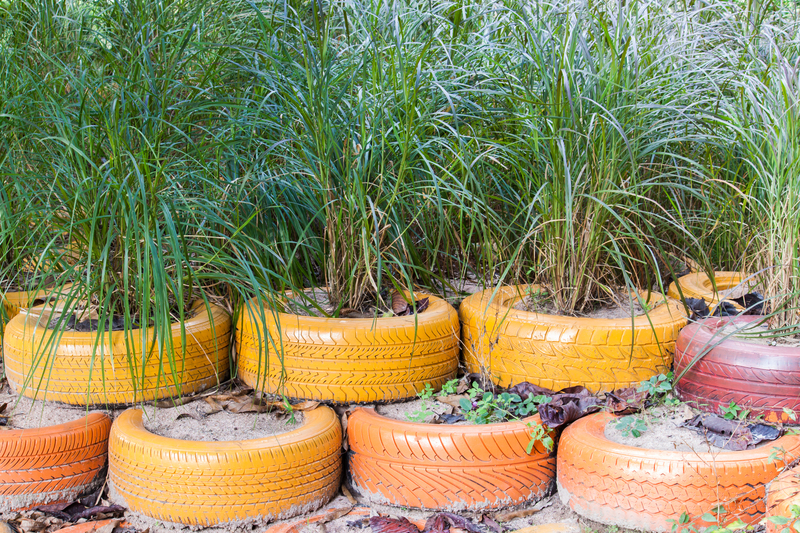Recycling Misapplications
Posted on 16/09/2025
Recycling Misapplications: What You Need to Know
Recycling is one of the most effective strategies for reducing waste and conserving the environment. However, certain misapplications of recycling practices can lead to unforeseen negative consequences. This article delves into some common recycling misapplications, their impact, and how to avoid them. By understanding the pitfalls, we can make our recycling efforts more effective and beneficial for the planet.
Understanding Recycling Misapplications
Recycling misapplications refer to improper or inefficient recycling practices. This can range from contaminating recyclable materials with non-recyclable waste to using recycling processes that consume more resources than they save. The consequences can include increased greenhouse gas emissions, wasted resources, and financial strain on recycling programs.

Common Misapplications in Recycling
Contaminating Recyclables
A significant misapplication involves contaminating recyclables with non-recyclable items. When non-recyclables like plastic bags, soiled food containers, or electronics are mixed with recyclables, they can contaminate entire batches, making them non-recyclable. This often results in those materials ending up in landfills.
Incorrect Sorting
Another common issue is incorrect sorting. Not all plastics, metals, or papers are created equal. Mixing different types of materials can make it challenging for recycling facilities to process them effectively. For instance, mistakenly placing plastic bags in curbside recycling bins can clog machinery, leading to costly repairs and downtime.
Downcycling vs. Recycling
Downcycling involves converting waste materials into new materials of lesser quality and reduced functionality. While downcycling is still better than landfilling, it does not contribute to true recycling, where materials are reused in a form close to their original state. Downcycling can often lead to a higher volume of waste over time.
Impact of Recycling Misapplications
Environmental Consequences
Misapplications can lead to increased pollution. Contaminated recyclable materials often end up in landfills or incinerators, contributing to greenhouse gas emissions. Additionally, inefficient recycling processes can consume more energy and water, negating the environmental benefits of recycling.
Economic Strain
Recycling programs can be costly to manage, and misapplications can further strain financial resources. When materials are contaminated, the cost of sorting and managing the waste increases. Facilities may also face higher maintenance costs due to damage caused by improper materials.
How to Avoid Recycling Misapplications
Proper Education
Educating the public about what can and cannot be recycled is crucial. Clear guidelines and regular community outreach can help reduce contamination rates. Initiatives such as recycling workshops and informative campaigns can make a substantial difference.
Improved Sorting Systems
Advanced sorting technologies, such as AI-powered machines, can accurately identify and separate materials. Investing in these systems can significantly reduce contamination and improve the efficiency of recycling operations.
Encouraging Manufacturer Responsibility
Producers should be encouraged to design products with recyclability in mind. Extended Producer Responsibility (EPR) laws can hold manufacturers accountable for the lifecycle of their products, promoting eco-friendly design and reducing waste.
Pros and Cons of Recycling
Pros
- Reduces the volume of waste sent to landfills
- Conserves natural resources like timber, water, and minerals
- Prevents pollution by reducing the need to collect new raw materials
- Saves energy compared to processing raw materials
- Supports public health by reducing hazardous waste
Cons
- High initial costs for recycling facilities
- Contaminated materials can lead to inefficient processing
- Downcycling reduces the quality and usability of recycled materials
- Requires significant public education and participation
- Inconsistent recycling practices and policies across regions
Tips for Effective Recycling
- Always rinse out containers before recycling to avoid contamination.
- Check local guidelines for what can and cannot be recycled in your area.
- Separate different types of materials to simplify the recycling process.
- Reuse materials when possible before opting to recycle them.
- Support products made from recycled materials to close the recycling loop.

Takeaways
- Recycling is beneficial but must be executed correctly to be effective.
- Avoid contaminating recyclables to ensure they can be processed properly.
- Stay informed about what materials your local recycling program accepts.
- Advocate for improved recycling technologies and policies in your community.
Conclusion
Recycling is a crucial part of our effort to protect the environment, but misapplications can severely undermine its benefits. By understanding common pitfalls and taking proactive steps to avoid them, we can ensure that our recycling practices are as effective and efficient as possible. Through proper education, improved sorting systems, and more responsible manufacturing, we can maximize the positive impact of recycling and move towards a more sustainable future.




